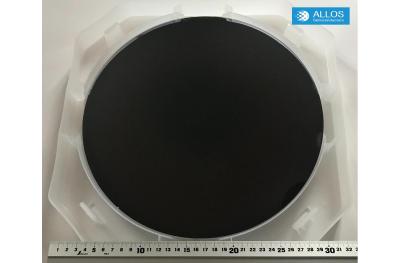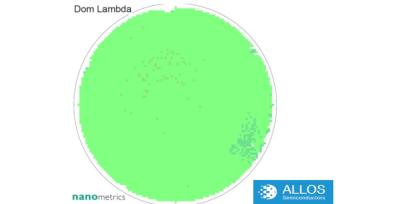We're happy to interview ALLOS Semiconductors, as part of our new series of interviews with MicroLED Industry Association members. ALLOS Semiconductors is an IP licensing and technology company that focuses on GaN-on-Si technology for the microLED industry. ALLOS offers a turn-key technology transfer to establish a super-uniform CMOS-compatible large epiwafer process at customers within only 12 weeks.
Q: Hello! Can you introduce your company and technology?
ALLOS Semiconductors is the global leader for gallium nitride on silicon epiwafer technologies (GaN-on-Si) for next generation, micro LED-based display solutions and other applications building on more than 20 years track-record.
Our customer and partner base includes top-tier companies from the electronic device, display, LED and semiconductor foundry industries. They benefit from the cost, yield and performance advantages of our patent-protected 200 and 300 mm GaN-on-Si micro LED epiwafer technologies – including our unique 1 bin® technologies.
Q: Can you say why you joined the microLED association and what it is you hope to achieve?
Micro LED displays are poised to deliver huge benefits. However, competition from LCD and OLED competitors is fierce. The association can strengthen the dialogue within the industry in order to accelerate adoption and success of micro LEDs in the market. Tasks include facilitating cooperation, developing standards and engaging into dialogues with the public and all stakeholders.
Q: What is your biggest challenge, and success to date in the microLED industry?
We see four fundamental challenges – which also differentiate micro LED from conventional or mini LEDs:
- Overcoming the tremendous yield challenge by using the manufacturing excellence of advanced 200 mm and 300 mm semiconductor fabs. ALLOS works with customers and partners to enable access to such manufacturing excellence for the micro LED industry.
- Provide 200 mm and 300 mm GaN-on-Si epiwafers which can be processed in advanced semiconductor fabs. ALLOS is meeting those requirements; most importantly low bow, no cracks, no contamination and 725 / 775 µm thickness.
- Achieve single-bin quality for all required parameters to avoid costly sorting, testing and repair. Most important is achieving uniform colors. Here, ALLOS is already delivering up to 98.6 % of the epiwafer area in the target bin.
- Further improve and apply the various approaches to achieve RGB colors in an economic way. Most-likely different approaches like color conversion, red nitride and color-adaptable LEDs will co-exist. ALLOS works with customers and partners with diverse strategies and our platform supports all approaches.
Q: Can you detail your latest prototype/demonstration?
We constantly demonstrate improved generations of our 200 and 300 mm micro LED epiwafer technologies. We also work closely with several lead customers and partners, shipping batches of epiwafers every month for them to develop and improve their display performance and manufacturability.
Q: How do you see microLEDs changing the display industry in the next 5-10 years?
To our believe micro LED based displays have the potential to disrupt the traditional display industry (PID, TV, laptops, automotive, smartphones, smartwatches, etc.) as well as taking such displays to new performance levels.
Additionally micro LEDs are enabling completely new and today unforeseen applications. Light field as well as MR and AR displays – including such futuristic but already successfully prototyped ones being built into contact lenses – are already providing an idea of how interaction between humans and machines will evolve in the future.
Furthermore, we see many non-display applications for micro LEDs in for example, medicine, opto-electronics and automotive.
Last but not least we expect the market for mini LEDs and for conventional LEDs to benefit from the manufacturing breakthroughs achieved on the path of taking micro LEDs into volume production.

